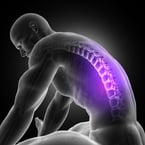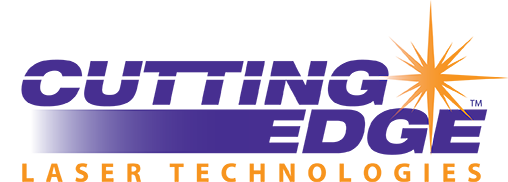Background:
Multi-Wave Locked Therapy (MLS) is being used by many medical practitioners in the United States to reduce pain and inflammation in a variety of patients. Most patient success stories have been as a result of treatments with MLS, including in orthopedic practices.
Dr. Doug Kiburz, an orthopedic surgeon in Sedalia Missouri and owner of Sedalia Laser Pain Center, has been very pleased with the MLS Laser results in his center. During the summer of 2017 ASA Lasers and Cutting Edge Laser Technologies combined efforts with Dr. Kiburz to perform a retrospective case study analysis of 235 patients who received treatment in Dr. Kiburz’s laser pain center. Undergraduate student Jayce Simoncic conducted the data collection under the supervision of Dr. Kiburz.
Medical diagnoses were assigned to each patient by Dr. Kiburz prior to laser therapy. Eleven conditions were identified for this study based on commonality and available resources: Knee Arthritis, Lumbar Pain, Shoulder Arthritis/Pain, Post-Operative Total Knee Replacement (TKR)/ Post-Operative Total Hip Replacement (THR), Neck Pain, Plantar Fasciitis, Wound, Hip Arthritis/pain, Contusion/Sprain, Tendinitis, and Post Fracture/ Joint Jam.
ANALYSIS:

MLS Laser Therapy is cumulative in effectiveness, thus multiple treatment sessions are recommended to patients. Patient improvement was based upon the patients’ report on a Visual Analogue Scale (VAS) for pain and post hoc analysis was done at (or after) 3 treatments and at (or after) 6 treatment sessions. At the conclusion of the treatment program, patient satisfaction was asked and recorded. During the time of data collection, Dr. Kiburz reviewed the charts and reported pain improvement based on individual patient’s reports of pain (<0% poor, 0% to 30% fair, 30% to 60% good, 60% to 100% excellent). A percent decrease in pain was calculated by: pre-treatment VAS minus post treatment VAS, then divided by pre-treatment VAS. This was then multiplied by 100. These results were averaged in Figure 1.
Figure 1:
| Condition Reported | Average % decrease in pain in or after3 treatments | Average % decrease in pain after6 treatments1 | Overall patient satisfaction(in average %) | Overall doctor reported improvement (based on individual assessment of pain improvement; measured in average %) |
| Knee Arthritis | 51 n= 14 | 66 n=2 | 86 satisfied or better | 86 good or better |
| Lumbar | 49 n= 26 | 53 n=10 | 71 satisfied or better | 64 good or better |
| Shoulder Arthritis/ Pain | 39 n= 30 | 47 n=4 | 60 satisfied or better | 53 good or better |
| Post Op TKR/THR | 57 n=38 | 87 n=11 | 76 satisfied or better | 76 good or better |
| Neck Pain | 47 n=19 | 74 n=3 | 63 satisfied or better | 63 good or better |
| Plantar Fasciitis | 78 n=6 | 02 n=1 | 100 satisfied or better | 100 good or better |
| Wound | 13 n=7 | N=0 | 25 satisfied or better | 25 good or better |
| Hip Arthritis/ Pain | 48 n=7 | 25 n=1 | 71 satisfied or better | 57 good or better |
| Contusion/Sprain | 51 n=18 | 77 n=3 | 80 satisfied or better | 75 good or better |
| Tendonitis (Ankle, Wrist, Fingers, Elbow, Shoulder) | 45 n= 46 | 48 n=4 | 77 satisfied or better | 71 good or better |
| Post Fracture/ Jam | 34 n= 27 | 75 n=2 | 70 satisfied or better | 66 good or better |
1Most patients did not receive 6 or more treatments. It can be estimated that results may be different (better) if more treatments occurred since MLS is cumulative in effectiveness.
2Only one patient had more than 3 treatments for Plantar Fasciitis. For this patient: after 6 treatments there was no decrease in pain and at the conclusion of all treatments (22) pain was 75% improved.
2 Only one patient had more than 3 treatments for Plantar Fasciitis. For this patient: after 6 treatments there was no decrease in pain and at the conclusion of all treatments (22) pain was 75% improved.
Patients with plantar fasciitis, when treated with MLS Laser Therapy, saw the largest average decrease in pain (78%) and overall were the most satisfied with their results (100%). Patients receiving treatment after total knee replacement or total hip replacement saw the second largest average decrease in pain by 57% at (or after) 3 treatments (e.g. pre treatment VAS score of 8 to post treatments VAS score of 3.5). The top 4 conditions in order of improvement are listed in Figures 2 and 3. Out of the 235 total patient charts analyzed, none experienced pain during or after laser therapy as a direct result of treatment. Few possible side effects were reported but all resolved quickly with no lasting effects.
Figure 2:
Condition in Order of Average Decrease in Pain at or After 3 Treatments
| Condition | Average % Decrease in Pain |
| Plantar Fasciitis | 78% |
| Post-Op TKR/THR | 57% |
| Contusion Sprain | 51% |
| Knee Arthritis | 51% |
Figure 3: Overall Average Improvement at Conclusion of Treatment
| Condition | Average % Improvement |
| Plantar Fasciitis | 100% |
| Knee Arthritis | 86% |
| Contusion Sprain | 75% |
| Tendonitis | 71% |
Conclusion
The number of recommended treatments for chronic pain conditions is 10 to 12 treatment sessions and thus, results in a different study may be different (higher) than those represented here. Overall, among the 11 conditions analyzed, the average decrease in reported pain was 46% at (or after) 3 treatment sessions. This equates to a patient having a pain level reported at 8/10 prior to MLS Laser Therapy and at (or after) 3 treatments having a pain level of 4.32/10. At (or after) 6 treatment sessions, average decrease in reported pain was 55%, thus equating in pre-treatment pain of 8/10 and resulting in pain of 3.6/10. . Therefore, it can be concluded that the Cutting Edge Laser Technologies MLS Therapy Laser is a pain free, non invasive alternative to reducing pain and inflammation for a variety of conditions and patients.



